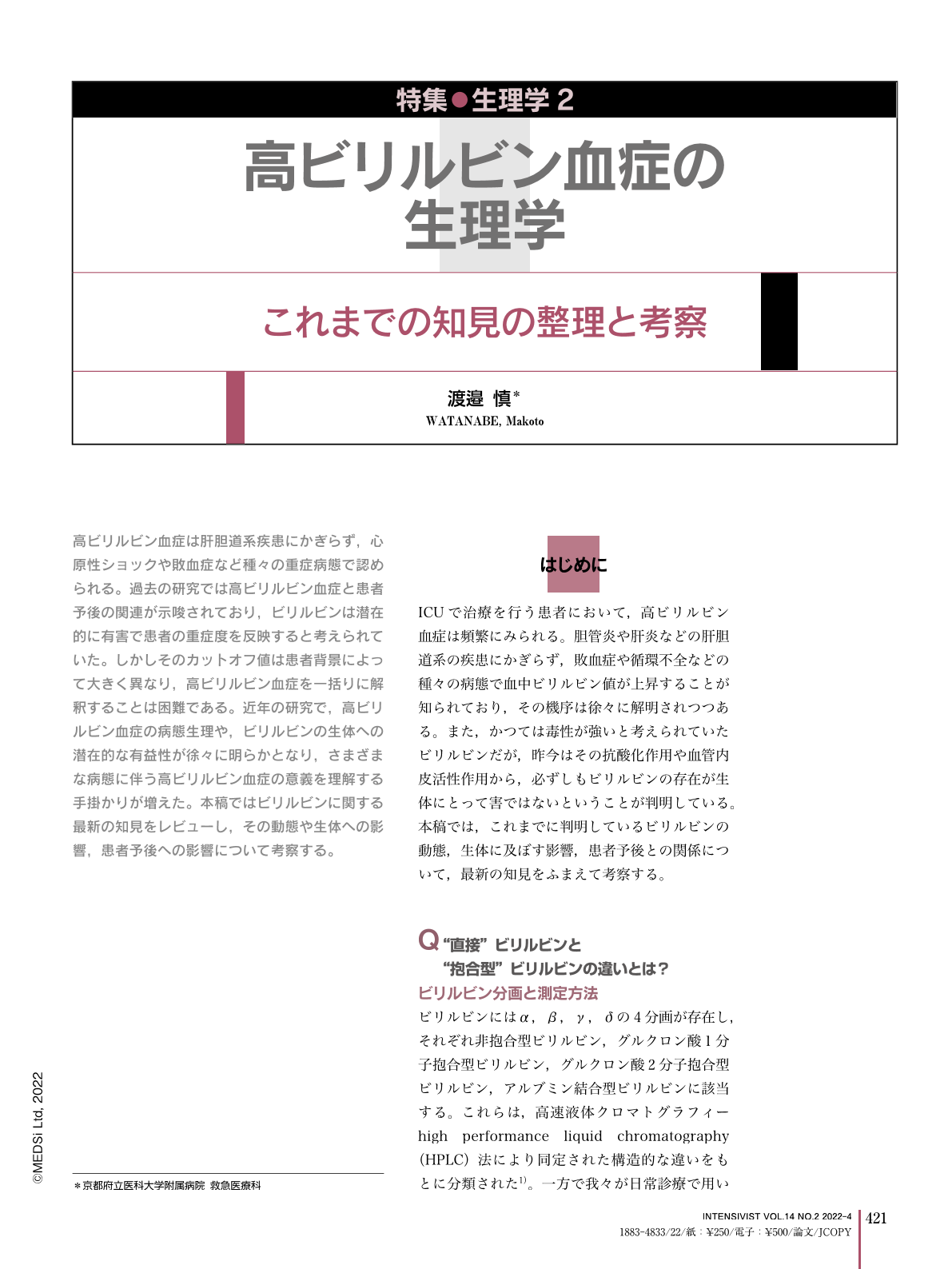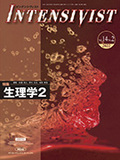Japanese
English
- 有料閲覧
- Abstract 文献概要
- 1ページ目 Look Inside
- 参考文献 Reference
高ビリルビン血症は肝胆道系疾患にかぎらず,心原性ショックや敗血症など種々の重症病態で認められる。過去の研究では高ビリルビン血症と患者予後の関連が示唆されており,ビリルビンは潜在的に有害で患者の重症度を反映すると考えられていた。しかしそのカットオフ値は患者背景によって大きく異なり,高ビリルビン血症を一括りに解釈することは困難である。近年の研究で,高ビリルビン血症の病態生理や,ビリルビンの生体への潜在的な有益性が徐々に明らかとなり,さまざまな病態に伴う高ビリルビン血症の意義を理解する手掛かりが増えた。本稿ではビリルビンに関する最新の知見をレビューし,その動態や生体への影響,患者予後への影響について考察する。
Hyperbilirubinemia is common in ICU patients, including patients with non-hepatobiliary disorders such as sepsis and cardiogenic shock. Bilirubin was thought to be potentially toxic and reflect illness severity in patients, as several studies suggested a linear relationship between hyperbilirubinemia and patient outcomes. However, the optimal cut off value for bilirubin varies widely depending on patient background, and thus it is hard to interpret hyperbilirubinemia by itself. Recent studies have partly revealed the pathophysiological mechanism of bilirubinostasis, such as alternations in the hepatobiliary transport system as well as disturbances of hepatic capture, disorders of conjugation, and biliary obstruction, allowing us to understand the significance of hyperbilirubinemia in different patient subsets. There are new insights indicating the possibility that mild hyperbilirubinemia may be adaptive and beneficial due to its antioxidant effects. Therefore, it is worth revisiting bilirubin in the context of intensive care. In this article, we review and integrate state-of-the-art knowledge of the physiology of bilirubin and discuss its dynamics, potential effects on the human body, and clinical impact on patient outcomes.

Copyright © 2022, MEDICAL SCIENCES INTERNATIONAL, LTD. All rights reserved.


